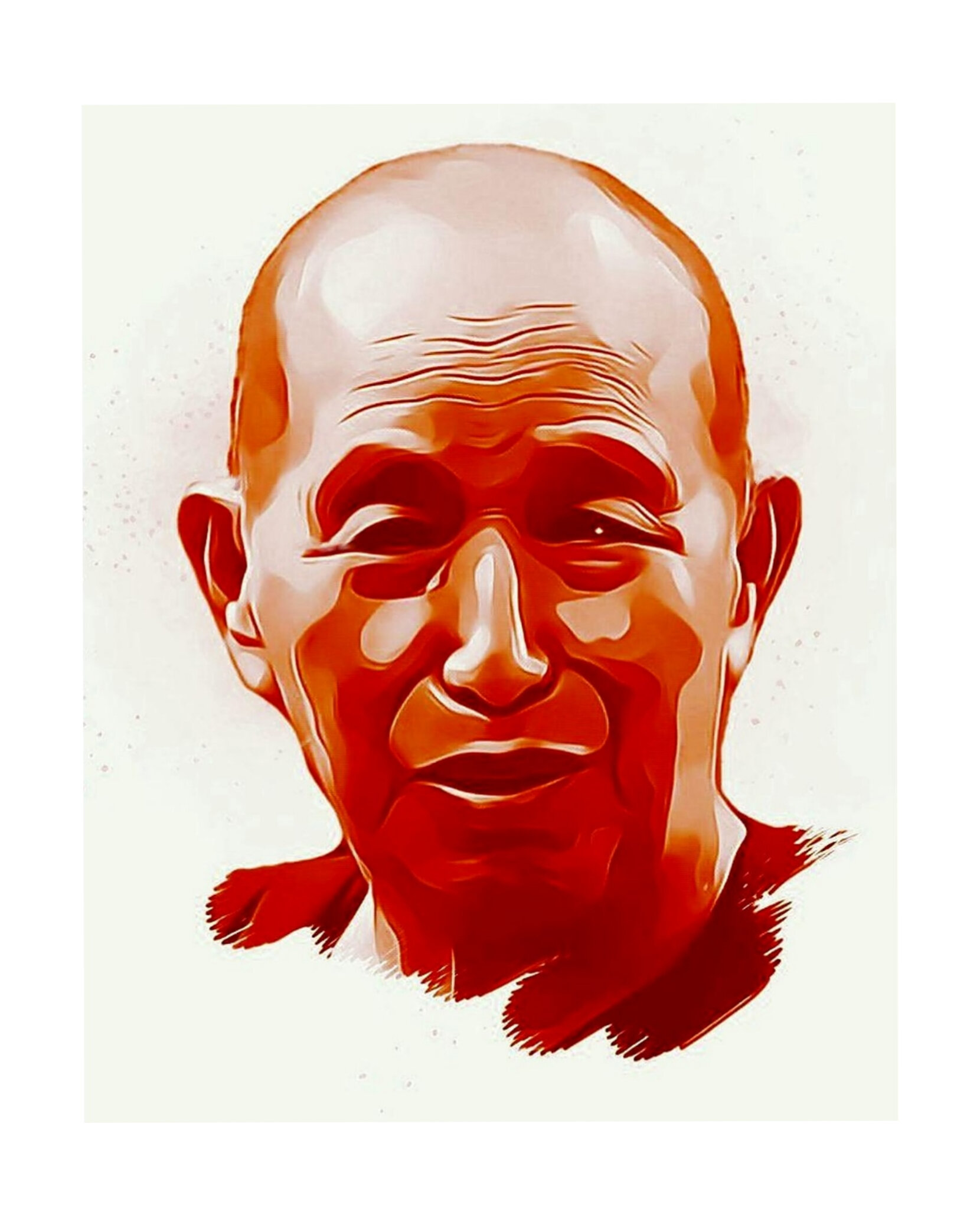RICHARD (RICK) DOBBIE
Rick is an Australian who lives and works in Phnom Penh. Currently, he works in experiential and project-based learning education and until recently with the advent of the pandemic he travelled extensively throughout Southeast Asia. Prior to coming to Cambodia, he also lived and worked in Malaysia and Thailand. He has also been on expeditions to the Arctic, Antarctic, the Amazon (which included the Galapagos Islands), and to Africa. He is a keen observer of people and culture. These five digital renditions in red are from a large collection of original portrait photographs.
Please visit his Website and Instagram for more information.
001
"Pa'O Lady”, Shan State, Burma (Myanmar)
Pa'O are the seventh largest ethnic nationality in Burma with a population of approximately 1,800,000 to 2,000,000. Women's traditional Pa'O dress consists of five pieces: a blouse, a jacket, a longyi that covers the knees, a turban and two large, conical shaped hair pins. Women also often carry a cane or bamboo sling basket. The Pa'O origin story has it that they are derived from a shaman and a female dragon. The turban represents the dragon from the story.
002
“Uncle - Nyaungshwe Township", Lake Inle, Burma (Myanmar)
The concept of filial piety, respect for elders, remains a strong theme throughout Southeast Asia and preserves the family as the fundamental unit of society. Within younger generations there may be some decline in the adherence to filial piety however, it remains salient and important for daily life in most Asian societies.
003
“Young Girl Exploring the Markets”, Phou Khoun, Laos.
Markets help maintain important social ties, linking rural and urban populations and even close neighbours in mutually rewarding exchange. The vast majority of the food supply in Southeast Asia comes from smallholders, many face not only accelerating climate change but also poverty, large-scale land-grabbing, and limits to markets, technology, credit, and water. Women smallholders especially face legal and social discrimination.
004
"Bhikku Monk - Mahagandayon Monastery", Amarapura, Burma (Myanmar).
Mahagandayon Monastery is the most prominent monastic college in Mandalay. Young monks here study for 7 to 10 years to complete their education. Each day about mid-morning thousands of monks line up for the midday meal, their last meal for the day. Visitors can participate in the alms giving food donation ritual by offering the monks rice and cakes to earn merit and improve their karma.
005
“Aunty - Nyaungshwe Township", Burma (Myanmar)
This lady was selling spices in the markets beside Lake Inle. The markets feature a wide range of produce, fish, vegetables and spices as well as textiles. Markets help maintain important social ties, linking rural and urban populations and even close neighbours in mutually rewarding exchange. Here in the markets, there is a wonderful mix of people including Karen and Pa’O ethnic groups.






